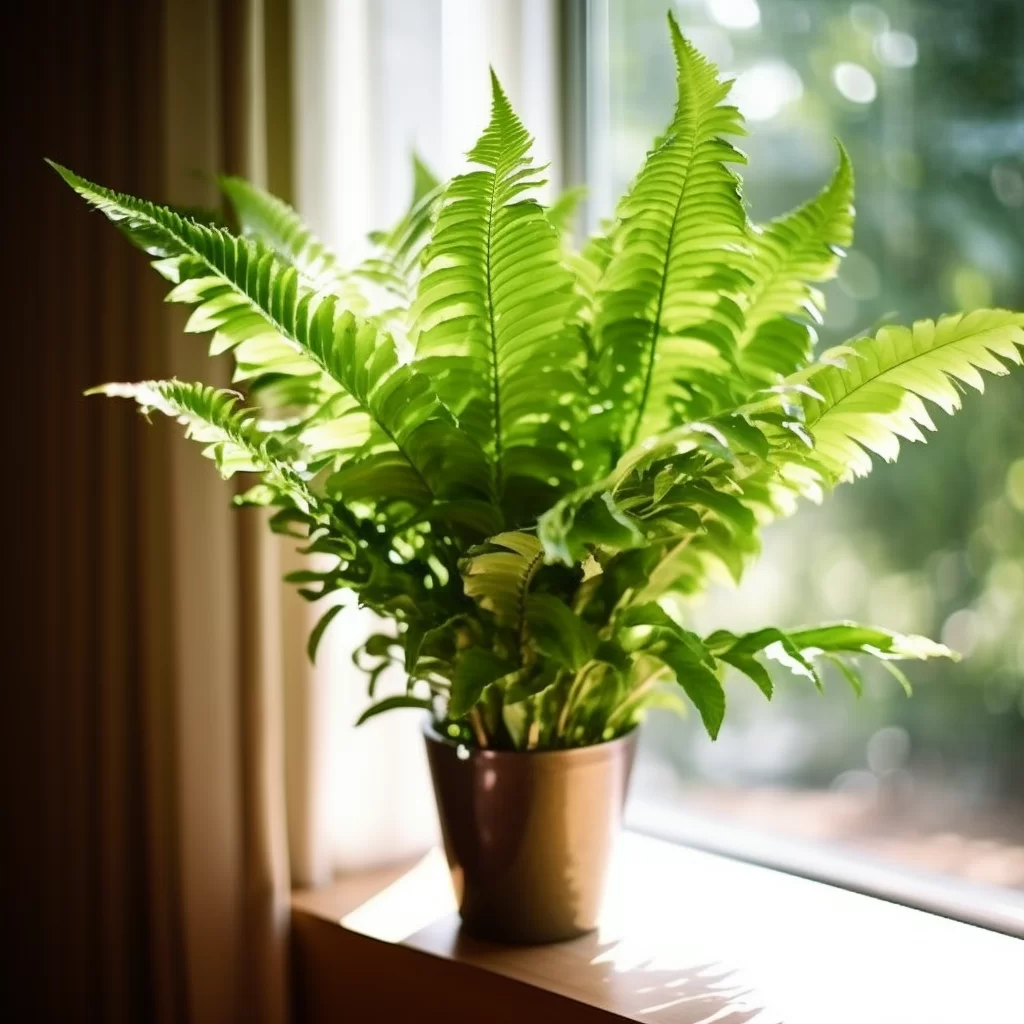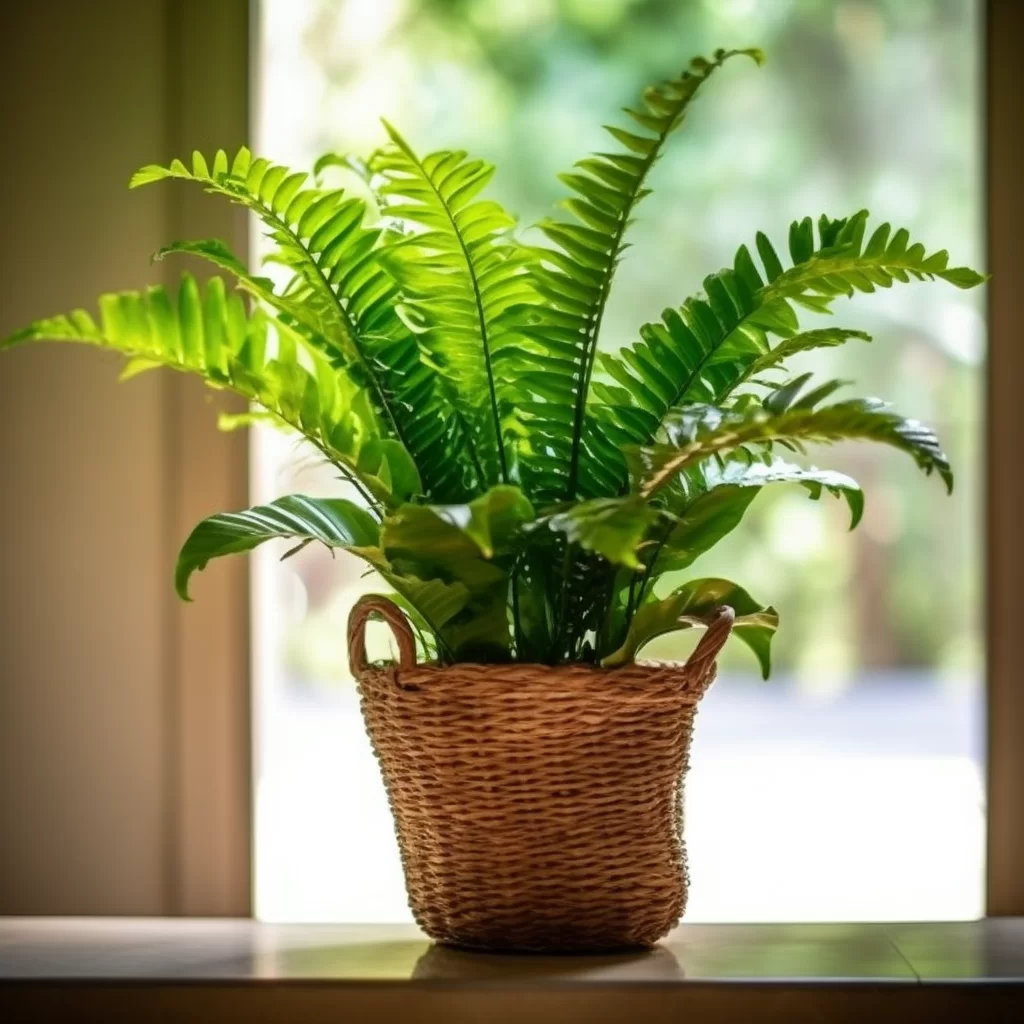Story of Day :
Contents
The Boston Fern: A Complete Guide and Care Tips
If you want to add a touch of elegance to your home or garden without too much effort, the Boston fern is the perfect choice.
This stunning plant has been a favorite among gardeners for years due to its lush green foliage and ability to thrive in various conditions.
Whether you’re an experienced gardener or just starting out, growing and caring for Boston ferns is a breeze.In our in-depth guide, we’ll provide you with all the essential information you need to grow and care for this beautiful plant.
We’ll cover everything from soil type and watering needs, to pest control and propagation techniques.
With our help, you’ll be able to enjoy the beauty of Boston ferns year-round!
What Is a Boston Fern?
The Boston fern, scientifically referred to as Nephrolepis exaltata, is a plant that is indigenous to tropical areas in the Americas.
This plant species is recognized for its elegant fronds that stretch out from its center in various directions.
When planted indoors or in shaded outdoor locations, the Boston fern can grow up to three feet tall and wide.
The plant’s size makes it a perfect fit for home decor enthusiasts who desire some greenery without taking up too much space. In conclusion, the Boston fern remains one of the most iconic houseplants worldwide due to its unique appearance and manageable size when grown indoors or outdoors with enough shade.
In conclusion, the Boston fern remains one of the most iconic houseplants worldwide due to its unique appearance and manageable size when grown indoors or outdoors with enough shade.
With its long, curvaceous fronds bending gracefully in every direction from the middle of its form, this plant adds a touch of elegance and tranquility to any living space it occupies.
It also requires minimal care and attention while providing numerous benefits like purifying indoor air quality by removing pollutants such as formaldehyde and xylene gas emissions.
How To Grow a Boston Fern
If you’re looking to grow a healthy Boston fern, it’s important to understand their preferred growing conditions.
These plants thrive in bright, indirect sunlight and need ample moisture to stay healthy.
They also prefer slightly acidic soil with good drainage for optimal growth.
It’s essential to ensure that the soil is never allowed to dry out completely, as this can cause the fern’s fronds to wilt and turn brown.Additionally, Boston ferns benefit from regular feedings of balanced fertilizer during the growing season, which typically lasts from spring through fall.
As with all plants, ensuring proper ventilation around your Boston fern is vital for maintaining its health and preventing disease or pest infestations.
With some basic knowledge about their ideal growing conditions in mind, you’ll be well on your way to cultivating vibrant and thriving Boston ferns in your home or garden space.

- Light: While they prefer bright, indirect light, direct sunlight will scorch their leaves.
Place your fern near an east- or north-facing window where it can receive morning sun but avoid direct afternoon light.
- Water:Boston ferns thrive on consistent moisture.
Water them frequently enough so that soil is consistently moist but not waterlogged as overwatering might cause root rot.
- Fertilizer:A good time-release 10-10-10 fertilizer applied once every three months during spring season would keep the plant healthy.
- Humidity/temperature: Boston Ferns prefer humid environment though it adapts well even in less humid places like air-conditioned rooms with dry air; however hot temperatures over 75 F might cause the plant to wilt while temperatures below 50 F could damage it
- Soil: Use well-draining soil mix that would keep the moisture but not let water accumulate otherwise root rot could occur.
Pests and Diseases of Boston Ferns
Boston ferns are usually strong and robust plants that don’t attract pests very easily, but they can still fall victim to mealybugs, spider mites, and scale insects.
These tiny bugs can cause significant damage to the plant if left untreated.
Luckily, there are effective ways to get rid of them without harming your fern.
Insecticidal soap or neem oil are both great options for controlling these pests.However, if you notice yellowing leaves or brown spots on your Boston ferns, it might be a sign of disease rather than a pest infestation.
Botrytis blight is one such fungal infection that often impacts Boston ferns when they’re overwatered during cool and damp weather conditions.
This fungus can spread rapidly throughout the plant and cause serious harm if not addressed promptly.
So make sure to keep an eye out for any signs of disease by inspecting your fern regularly so you can take action as soon as you spot something suspicious!

How to Propagate Boston Ferns
Are you a fan of Boston fern plants and want to spread the love to your friends and family? Propagating these plants yourself is easier than you may think! First, locate a healthy fern that has grown at least one new frond.
Carefully remove the plant from its pot and separate the new frond from the parent plant using sharp scissors.
Place the new frond in a container filled with moist potting soil, keeping it in a warm location with bright but indirect light.
Within a few weeks, roots should begin to form, signaling that your new Boston fern is ready to be transplanted into its own pot.Don’t have access to an existing Boston fern? No problem! You can still propagate this popular houseplant by purchasing spores online or at your local garden center.
Mix these spores into moist potting soil and place them in a shallow container covered with plastic wrap or glass.
Keep this container in a warm location with bright but indirect light until you begin to see small green sprouts emerging from the soil.
Within several weeks, these sprouts will grow into fully-formed young plants ready for transplantation into their own pots.
By following these simple steps, you’ll soon be able to share your love of Boston ferns with everyone around you!
- Cut off the runners: Cut off any healthy runners (long stems) at their base using sharp pruning shears.
- Pot them up: Place each runner in its own pot filled with fresh potting soil mix in such a way that part of the stem is buried into soil; this should encourage more roots growth from beneath making healthier plants hadling water stress better
- Maintain Moisture : Keep them constantly moist for about two weeks until new growth emerges which signals successful propagation!
 To summarize, raising a Boston fern is a fun and fulfilling experience that you won’t regret.
To summarize, raising a Boston fern is a fun and fulfilling experience that you won’t regret.
These plants are not only beautiful but also easy to care for, making them an ideal addition to any home.
With proper watering and humidity levels, your fern will thrive and add a touch of natural beauty to your space.Furthermore, tending to a Boston fern can provide mental health benefits such as reducing stress levels and improving air quality.
Studies have shown that spending time around plants can have positive effects on mood and overall well-being.
So why not give it a try? Growing a Boston fern could be the perfect new hobby for you!
The Boston fern is a beautiful plant that can easily be grown by anyone with a little bit of care and attention.
Whether you’re looking to add some greenery to your home or garden, this elegant plant is sure to impress.
By ensuring that it receives adequate light, water, and humidity, you can enjoy its lush green fronds all year long.One of the best things about the Boston fern is how long it can last when properly cared for.
With a little bit of effort put into its growing conditions, this plant will thrive for years to come! So if you’re looking for an easy-to-grow houseplant or outdoor ornamental that will add beauty and elegance wherever it’s placed, look no further than the Boston fern.